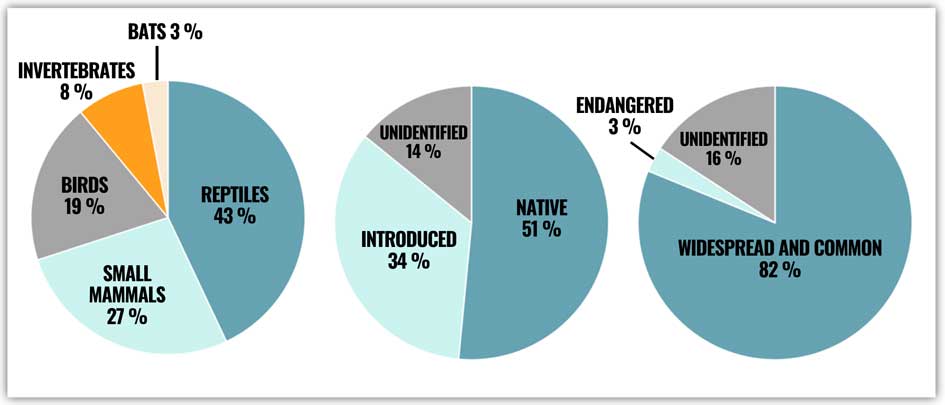Joan LIM Hui Mian, Life Sciences Major – AY 2016/17
Predation by domestic cats and its potential impact on wildlife
Domestic cats (Felis catus) are among the world’s most invasive species. Renowned for their hunting prowess, they are such successful predators that they are known to have wiped out native species of birds, mammals and reptiles in many contexts, but especially on islands. Studies in Australia suggest amazing levels of mortality among birds and reptiles. And a systematic review in the US identified domestic cats as the leading anthropogenic source of mortality for birds.
But the impact of predation by cats on native wildlife in the tropics remains largely unstudied – a knowledge gap that Joan set out to address, focusing on Singapore (SG) which might reasonably be suspected to have a major issue for three reasons. First, SG has high biodiversity, including many birds, small mammals and reptiles that could make easy prey for cats. Second, it is located along the East Asian Australasian flyway, a major migratory route for birds, many of which overwinter in SG or stop on their way to wintering grounds further south. This means bird diversity, especially during fall migration, is very high. Finally, it is both the most urbanised country in the tropics (all residents live in the urban area and most of its original forest is converted to impervious surface and managed green spaces) and one of the world’s most densely populated ones. That’s a problem because the density of cats tends to rise with that of humans. But, with no good data on numbers of cats or the extent to which they prey on wildlife, any impacts remained unknown.
Naturally, the concern is not “house cats”, but rather free-ranging ones that that roam unrestricted, including unowned cats and pets (that their owners let out). And the focus here was pets in private properties (as opposed to government housing, where cat ownership is illegal). Joan recruited 35 study cats at 20 residences and asked owners to report their cats’ hunting behaviour, by sending her photos of prey items brought home. She also gathered data on cat ownership.
Over four months, 18 study cats hunted (17 didn’t) and brought back a total of 37 prey items (three individuals accounted for 41 % of prey returns).
Reptiles were the main prey (left chart). Most species were native (middle) and only one (the Oriental magpie robin, Copsychus saularis) was nationally endangered (right).
Younger cats and cats that live near green spaces hunt the most.

Based on her extrapolated mean annual predation and ownership rates, Joan estimated that free-ranging pet cats could kill a total of 7 700 animals per year in SG. That’s way below predicted levels in other studies, but we believe her numbers vastly underestimate mortality due to domestic cats, for two main reasons. First, she didn’t document hunting by unowned cats, which are known to be much more prolific hunters than owned individuals. Second, she relied on self-reported data, which tend to yield underestimates (see also this study) for reasons including a lack of commitment by cat owners and, more importantly perhaps, the fact that cats don’t kill every animal they hunt and don’t return every prey item they kill. Therefore, the next step may be to fit pet and unowned cats with collar-mounted cameras to obtain unbiased estimates of hunting behaviour.
